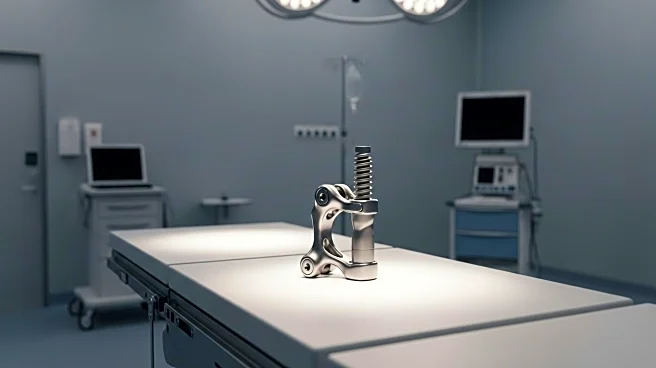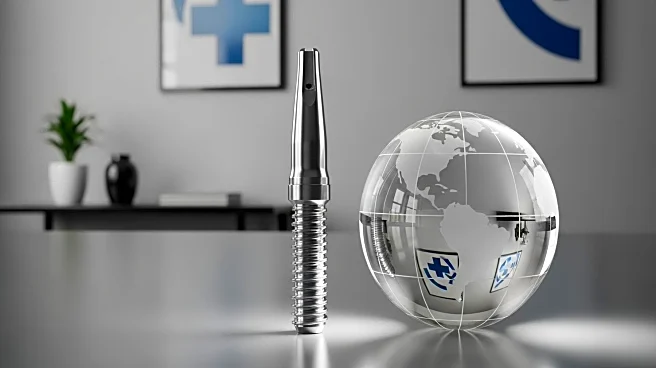What's Happening?
Johnson & Johnson has announced its intent to separate its Orthopaedics business, aiming to enhance strategic and operational focus and drive stakeholder value. The separation will establish DePuy Synthes as a standalone orthopaedics company, which will be the largest in its field with leading market share positions. This move is part of Johnson & Johnson's strategy to focus on higher-growth and higher-margin markets within its MedTech portfolio. The company expects the separation to improve top-line growth and operating margins, while maintaining leadership in key growth areas such as Oncology, Immunology, Neuroscience, Cardiovascular, Surgery, and Vision.
Why It's Important?
The separation of the Orthopaedics business is a strategic move to optimize Johnson & Johnson's portfolio and focus on areas with significant growth potential. By establishing DePuy Synthes as a standalone entity, the company aims to enhance its market-leading position and improve patient care. This decision reflects broader trends in the healthcare industry, where companies are increasingly focusing on specialization to drive innovation and efficiency. The separation is expected to benefit stakeholders by increasing operational focus and potentially improving financial performance.
What's Next?
Johnson & Johnson plans to complete the separation within 18 to 24 months, subject to regulatory approvals and consultations with employee representative bodies. The company will continue to operate its Orthopaedics business in alignment with its current strategy during this period. Namal Nawana has been appointed as Worldwide President of DePuy Synthes to lead the business through the separation process. The company will explore multiple paths to effect the separation, aiming to position DePuy Synthes for long-term success as a standalone company.
Beyond the Headlines
The separation of Johnson & Johnson's Orthopaedics business could have broader implications for the healthcare industry, potentially influencing other companies to consider similar strategic moves. This decision underscores the importance of specialization in driving innovation and addressing unmet medical needs. The focus on higher-growth areas may lead to increased investment in research and development, ultimately benefiting patients through improved healthcare solutions.












